DIY TV antenna: step-by-step instructions for assembling popular TV antenna models
Real craftsmen differ from ordinary people in that they do not run to the store if necessary, but try to build the right device on their own. Moreover, they often get devices that are not inferior in characteristics to factory analogues.
As it turned out, the assembled TV antenna with its own hands perfectly catches the signal from the nearest television tower. Moreover, you can design and assemble many effective functioning devices for home use. In this article, we present a selection of the best models with detailed instructions for their manufacture. And for starters, we’ll analyze their advantages over purchased ones.
The content of the article:
What makes homemade antennas good?
Even with the advent of computer technology and the Internet, the popularity of television has not declined. A large number of different programs and channels satisfy the needs of both kids and adult family members.
But sometimes TV people are faced with circumstances in which they need to quickly and competently make their own antenna.

Here are just a few reasons to engage in technical "amateur":
- the residential building is still new, the providers have not had time to master it;
- the house is far from the city and shops;
- cable television was turned off for professional work;
- the old device went out of order, but there is no money for the new one, etc.
And some home inventors are abandoning purchased devices for new experiments. Such a hobby often helps out and also saves the family budget.
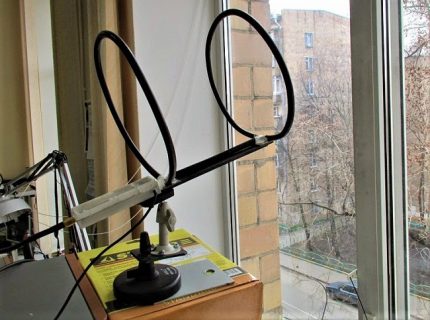
Skeptics may object and say that a do-it-yourself television antenna does not compare in quality with branded devices.
However, practice has shown that with a favorable position of the building and correctly performed calculations, the signal is caught remarkably, and the homemade product does its job perfectly.
Homemade Models
It should be understood that the transmission of a digital signal is limited by both distance and visibility. It is believed that the transmitter can provide a good signal at a distance of 60 km, although in practice there have been cases when 90 km were not an obstacle, especially when using amplifier.
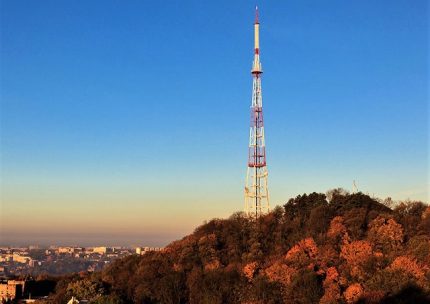
Under such conditions, even a weak signal will be sufficient for the image and sound to satisfy consumer needs.
However, the following requirements apply to antennas:
- location - along the axis of the incoming electromagnetic wave;
- all work is carried out carefully, in accordance with the calculations;
- do not forget about polarization orientation;
- if there is interference matching in frequency, additional protection is needed.
For signal reception to be high-quality, it must be 1.5 dB higher than background noise accompanying interference. If cable damage or phase distortion occurs, even a strong signal will disappear.
Model # 1 - a simple device from beer cans
This is the simplest modification of a home antenna that does not require special knowledge or calculations. Of course, the device cannot be called powerful, but under favorable conditions it is able to catch several channels.
To make it, you will need two beer cans, a meter-long piece of a television cable with a connector, a construction or office knife for cutting the cable, electrical tape, a small wooden block.
To learn how to make a simple TV antenna at home, just use the photo instruction below. The device is very popular, so the manual is detailed and accessible to everyone.
Step-by-step instructions for manufacturing a "can" device:
The antenna is completely ready, it remains to connect it to the TV.
For those who are doing this for the first time, here is another short photo guide:
This is a primitive version of the antenna, it is not worth hoping for an excellent image or a large number of captured channels.
But with a favorable location of the house relative to the broadcast source, you can find from 5 to 8 different channels that will be displayed in satisfactory condition.
To improve the quality of signal transmission, you can try to change the position of the antenna or slightly increase the length of the wire to bring it to the balcony.
Model # 2 - Digital Broadcast Biquadrat Antenna
The biquadratic antenna, so beloved by self-taught masters, was invented by the engineer Kharchenko in the last century, whose name it is still called.
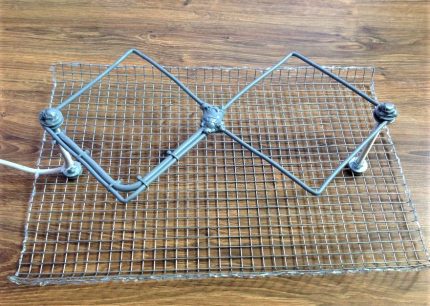
To increase the directivity, a double square is equipped with a lattice or screen, but with good wave conductivity it is not required. We offer two similar options that differ in material and manufacturing nuances.
Option # 1 - Copper Wire
To receive an analog or digital signal, a simple, small, antenna made of copper wire and coaxial cable is suitable. The design of the device is simple: a biquadrat with a central housing from a junction box. It can be installed in an apartment or on the street.
The cost of the antenna is small, since almost all materials can be found at home or bought inexpensively in a store selling accessories for televisions and other equipment.
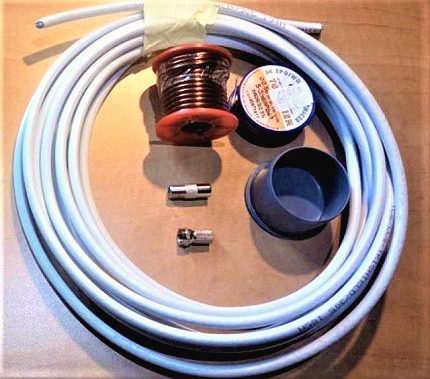
Digital television is now common, so the antenna is designed specifically for it. It is not worth setting random sizes, it is better to make calculations. First you need to find out the range of digital channels, the necessary information can be obtained from the directories on the Internet.
For the “digit” the average value of the frequency is 690 MHz. If you still use analog channels, you will need 470 MHz (for decimeter waves).
Next, you need to calculate the sizes - and here it is easiest to use an online calculator that is designed to calculate antennas of this type. Paste the frequency into the upper window - other parameters are automatically calculated.
For a 690 MHz biquadrat, one side of the square (L1) is approximately 105 mm, and the length of the entire instrument (L2) is 295 mm. These are the basic dimensions you need to know.
Step-by-step instructions for making a homemade copper antenna TV antenna:
After installing the antenna, it is necessary to put the plug on the other end of the cable, if it is not there, and then plug it into the corresponding connector on the TV.
To check the signal quality, turn on auto search. Most likely, the quality of the reception will be good.
Option # 2 - from aluminum wire
The second model resembles the first in design and manufacturing method, but it also has distinctive features.
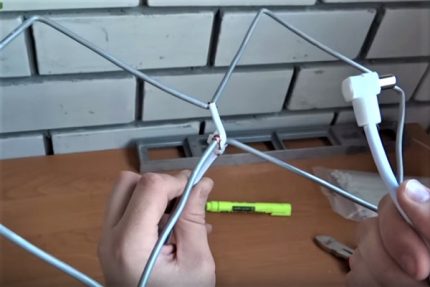
It takes very little time to assemble the structure and connect.
If all the materials are prepared, and the tools are at hand, then one free evening is enough.
The finished antenna, so that it catches the signal better, must be taken out to the balcony or put in the window.
If the nearest TV tower is on the side, then to improve the direction, you can fix the biquadrat on a stick and set forward.The quality of wave reception is not so negatively affected by the distance as the presence of all kinds of obstacles - for example, residential high-rise buildings.
Model # 3 - Spiral TV Device
This is a suburban option without an amplifier, assembled from improvised material: the remainder of the power cable and the old snow shovel. The cable is used to make a spiral, and a good reflective screen is obtained from a fragment of a shovel.
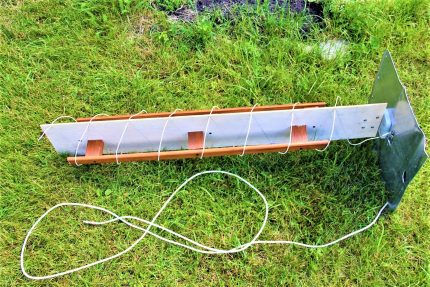
A decimeter antenna picks up digital broadcasts if it suits the reception range. In order to calculate the step between the turns, it is necessary to clarify the frequency of transmission of the “numbers” in the region, and translate the resulting value into meters.
Calculations for this model:
- frequency - 522 MHz
- wavelength (λ) - 0.57 m
- ⌀ of each turn - 0.177 m
- step between two adjacent turns - 0.137 m
- distance from cable to screen - 0.074 m
- reflective screen width - 0.35 m
Before starting work, it is recommended that all measurements be recorded on a chart that will serve as a guide.
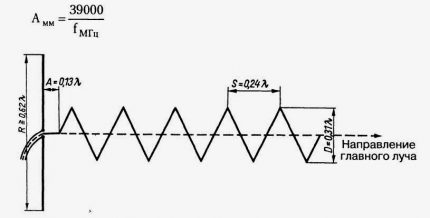
For work, you need a flat part of the snow shovel, which is made of stainless steel. If there are no similar items on the farm, then just a steel sheet. It is not necessary to cut a circle out of it; the workpiece may take the form of a square or rectangle.
A spiral needs a conventional electric wire with a diameter of 0.2 cm, or rather, one of its copper conductors in polymer insulation. In practice, it is better to use a wire whose cross section is 5 times larger - so the reception range will be wider. We need a second cable with a connector - coaxial, with a resistance of 75 ohms.
Procedure:
- To build a base for winding cable from a sheet of plywood and wooden battens. Ideally, there should be a dielectric cylinder instead.
- Straighten the steel sheet, fix it perpendicular to the base using a fixed screw mount.
- To wind the cable with turns according to the calculations.
- Connect the coaxial cable with twisted cable.
For testing, the product must be moved to the upper part of the house and installed in the attic or in the attic - where the antenna will be protected from rain. But this is provided that the roof is covered with a material through which waves freely penetrate - for example, soft tiles.
In addition to this model, for the summer cottage you can build other, no less simple and effective, variants of antennas from improvised materials. In another article on our website, we presented a selection of the best suburban models with detailed instructions for their manufacture.
A few recommendations for the use and operation of spiral homemade:
The spiral antenna showed good results at a distance of 90 km from the nearest decimeter wave translator - the two TV channels worked in satisfactory quality.
An amplifier is optional. It is used if the length of the reducing coaxial cable exceeds 3 m or another 1-2 TVs are connected to such an antenna.
If all the considered home-made models seem complicated to you or you do not want to bother and spend your time assembling them, you can always buy a ready-made antenna in a store, for example, a satellite one. In this case, you will come in handy. installation instructions plates and self tuner tuning.
Conclusions and useful video on the topic
Express antenna from a television cable:
Bikvadrat Kharchenko with a reflector:
Calculations and manufacturing of an antenna on a grating:
Here are only four guides on how to quickly make a home antenna for a TV, in fact there are many more. There are more serious options, with accurate calculations by formulas and using additional amplifiers. For starters, you can choose the simplest device and see if it really works.
Using a homemade TV antenna? Which model did you prefer and how much time did it take you to build it? Please tell us in the comments section about your experience in manufacturing the device, show photos of the finished product by attaching them below. If you wish, share useful assembly recommendations with beginners - your successful experience will inspire the creativity of other home masters.

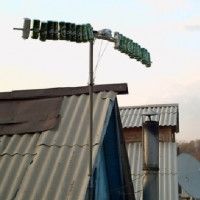 Do-it-yourself antenna for DIY: options and schemes for homemade products + manufacturing instructions
Do-it-yourself antenna for DIY: options and schemes for homemade products + manufacturing instructions 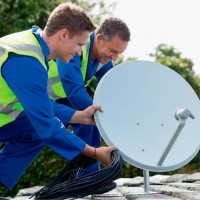 Do-it-yourself installation of a satellite dish: detailed instructions for installing and setting up a satellite dish
Do-it-yourself installation of a satellite dish: detailed instructions for installing and setting up a satellite dish 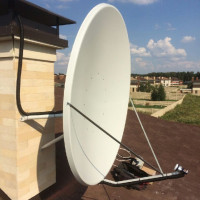 Do-it-yourself satellite dish tuning: do-it-yourself briefing on tuning the dish on the satellite
Do-it-yourself satellite dish tuning: do-it-yourself briefing on tuning the dish on the satellite 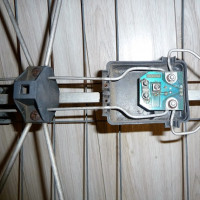 TV signal amplifier: how it works and how to choose a digital TV signal amplifier
TV signal amplifier: how it works and how to choose a digital TV signal amplifier 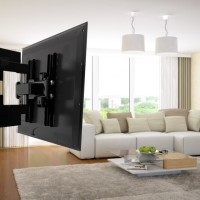 How to make a DIY TV bracket: popular homemade options
How to make a DIY TV bracket: popular homemade options 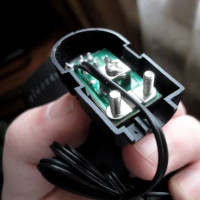 Antenna amplifier for a TV: the principle of operation and the rules for choosing a TV antenna amplifier
Antenna amplifier for a TV: the principle of operation and the rules for choosing a TV antenna amplifier  How much does it cost to connect gas to a private house: the price of organizing gas supply
How much does it cost to connect gas to a private house: the price of organizing gas supply  The best washing machines with dryer: model rating and customer tips
The best washing machines with dryer: model rating and customer tips  What is the color temperature of light and the nuances of choosing the temperature of the lamps to suit your needs
What is the color temperature of light and the nuances of choosing the temperature of the lamps to suit your needs  Replacement of a geyser in an apartment: replacement paperwork + basic norms and requirements
Replacement of a geyser in an apartment: replacement paperwork + basic norms and requirements
You can make the option easier. Take copper wire and a nail or self-tapping screw. Screw the latter into the ceiling and attach one end of the wire to it, and connect the other to the TV. Two central channels so it catches me without problems. I use such an antenna in the garage. But for digital TV, I bought it in a store with an amplifier. We have a tower 40 kilometers away, but the signal is weak, even the townspeople complain, not to mention the villages located outside the city. Moreover, the prices of such antennas are quite affordable, it is inexpensive. If you also have problems with the signal, it is better not to start experimenting and spend your time on them, I'm sure.
I want to make some simple homemade antenna for a summer residence. It is advisable from available materials that are easy to get.Of the proposed material, I liked the spiral antenna most of all. It’s good that you don’t even have to solder. Although it is also not difficult to make copper / aluminum wires, apparently. I don’t need much to get the main channels normally, and that's enough.
The most interesting thing is different. It’s not a fact that an antenna purchased in a store will catch anything at all. I have at home a room antenna from a store for 500 rubles, which did not catch anything at all, not a single digital, only analog, and even that is bad, although it is not very far from the tower. And as a contrast, in the video I made the antenna myself from a television cable. Work 10 minutes, but in the end I caught 10 digital channels and 3 radio (approximately 50-55% of stable reception). As a result, a free antenna shows better ...
I want to try to collect a biquadrat with a reflector. I think this option should work well in the country.